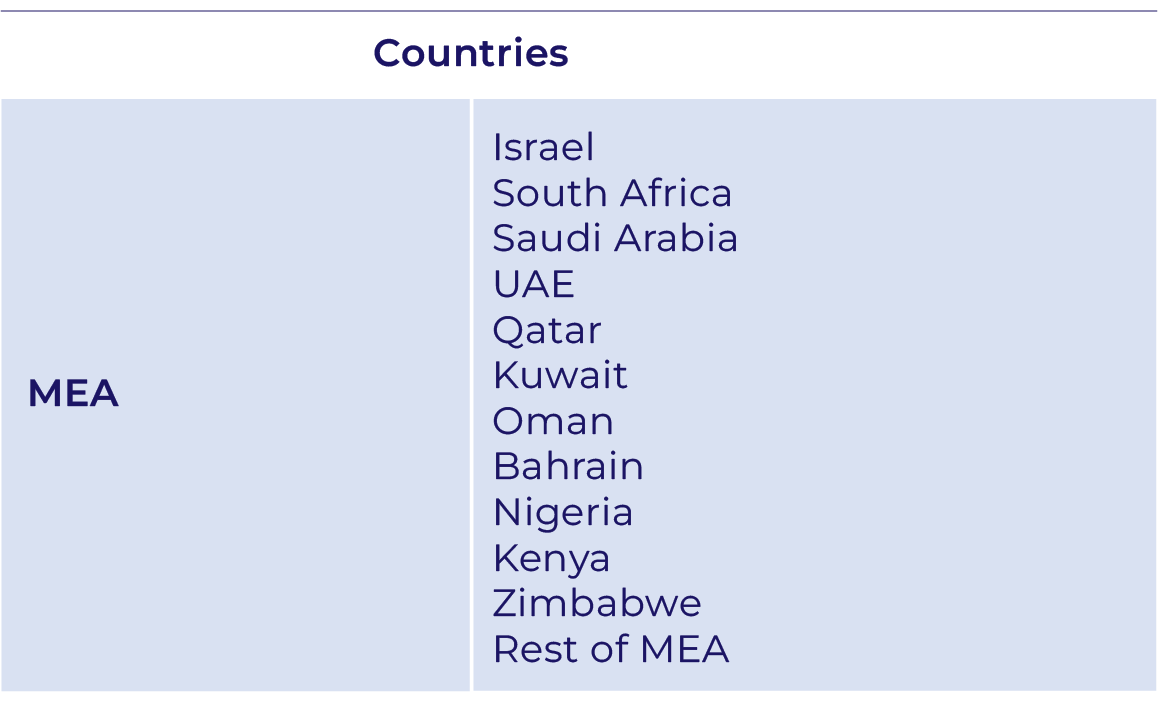MEA AI Memory Chips Market Outlook
With a projected valuation surpassing $8.77 billion by 2033, the MEA AI memory chips market is evolving into a high-stakes frontier for digital transformation, national AI agendas, and deep-tech innovation. The Gulf Cooperation Council (GCC) is at the helm of this momentum, leveraging government-led initiatives such as Saudi Vision 2030 and UAE Vision 2031 to fast-track artificial intelligence integration across critical sectors. AI memory chips—specifically DRAM, HBM (High Bandwidth Memory), SRAM, and neuromorphic computing architectures—have become indispensable for enabling low-latency, high-throughput AI applications in fintech, digital healthcare, autonomous systems, and public governance.
Saudi Arabia, positioned as a technological powerhouse in the Middle East, is catalyzing market growth through the $100 billion ALAT program backed by its sovereign wealth fund (PIF), which aims to localize AI-centric hardware supply chains. The Kingdom’s acquisition of Nvidia’s Grace Blackwell GB300 chips and the establishment of the National Capability Center for Semiconductors—which will upskill over 5,000 engineers by 2030—reflect a deliberate pivot from AI adoption to AI production. As per David Gomes, “This is about building sovereign capacity—Saudi Arabia isn’t just buying AI technology, it’s building the next generation of it,” underscoring the country’s broader ambition to lead on generative AI, LLMs, and NLP-focused infrastructure.
In parallel, the UAE is making decisive moves toward AI industrialization, with investments in memory infrastructure expected to hit $XX billion by 2033. The landmark partnership between G42 and OpenAI, including the deployment of a generative AI-optimized supercomputer in Abu Dhabi, highlights how memory-intensive computing—especially via HBM and advanced packaging—forms the backbone of the country's AI strategy. Beyond domestic advancements, the UAE is facilitating cross-border R&D corridors with Korea's KETI and leading Taiwanese research institutions to overcome semiconductor manufacturing hurdles and accelerate technology licensing. These collaborations position the country as a digital-first, AI-native hub for enterprise and government AI workloads.
Qatar, with its AI memory chips market projected to reach $XX billion, is doubling down on sovereign design and embedded AI systems. Notably, its $60 million initiative with Türkiye to manufacture 65nm chips reflects a calculated strategy to achieve AI hardware independence. Simultaneously, the Qatar Investment Authority (QIA) is steering capital into memory-optimized infrastructure for e-mobility and culturally aware LLMs, essential for Arabic-centric AI services. Qatar’s pursuit of national data and AI sovereignty is underpinned by a deep commitment to developing homegrown datasets and memory-efficient NLP models tailored for local linguistic and governance needs.
Kuwait’s AI memory chip demand—set to reach $XX billion by 2033—is driven by public administration digitization under the “New Kuwait 2035” roadmap. The deployment of large language models in citizen services, fintech platforms, and e-governance frameworks is spurring demand for DRAM and SRAM-based configurations that support real-time edge processing. The Kuwait Institute for Scientific Research (KISR), alongside foreign academic partnerships, is actively prototyping AI-ready chipsets, ensuring that AI deployment aligns with national ethical automation, data privacy mandates, and reskilling initiatives.
Meanwhile, Oman is carving a niche in the AI chip packaging ecosystem. With a major fabrication and design facility being planned in the Salalah Free Zone by AONH Private Holdings, Oman is betting on high-value processes such as advanced chip packaging, which currently face global supply chain bottlenecks. Collaborations with Kaynes Technology India are anchoring workforce development in semiconductor design and fabrication, with an eye on high-performance edge-AI and autonomous transport applications.
Bahrain’s approach blends regulatory foresight with focused investment. Its $16 million initiative led by Polymatech to establish a fabrication unit in Hidd marks a notable effort in building a viable AI hardware base. Crucially, Bahrain’s AI Governance Law, harmonized with ISO/IEC 42001 standards, is receiving international recognition for its structured approach to AI regulation, especially in sectors like healthcare and cybersecurity that depend heavily on high-reliability AI memory chips. This policy clarity is already attracting foreign direct investment and enabling Bahrain to serve as a compliant sandbox for AI chip deployment across telecom, public services, and digital health.
What makes the GCC uniquely positioned in the global AI memory chips market is its geostrategic location—bridging East Asia, Europe, and Africa—and its progressive industrial policy ecosystem. The region’s tax-free zones, free trade agreements (FTAs), and emerging bilateral tech corridors are lowering entry barriers for semiconductor giants like AMD, TSMC, and Samsung, many of which are actively exploring joint ventures, IP licensing models, and regional foundry partnerships. Yet, challenges remain, particularly in cleanroom operations, lithography talent shortages, and ultra-pure water systems essential for chip fabrication. In response, regional governments are investing heavily in STEM scholarships, semiconductor fellowships, and regional innovation accelerators, all aimed at filling these capability voids by the next decade.
As David Gomes emphasizes, “The next decade will determine whether GCC nations become net importers or producers of AI infrastructure. Right now, every chip fab, every engineering program, every partnership signed is moving the region one step closer to the latter.” The convergence of ESG-conscious industrial policy, AI talent localization, and sovereign tech infrastructure is placing the MEA AI memory chips market on a trajectory of accelerated growth and strategic relevance.
Authors: David Gomes (Manager – Semiconductor)
*Research Methodology: This report is based on DataCube’s proprietary 3-stage forecasting model, combining primary research, secondary data triangulation, and expert validation. [Learn more]








